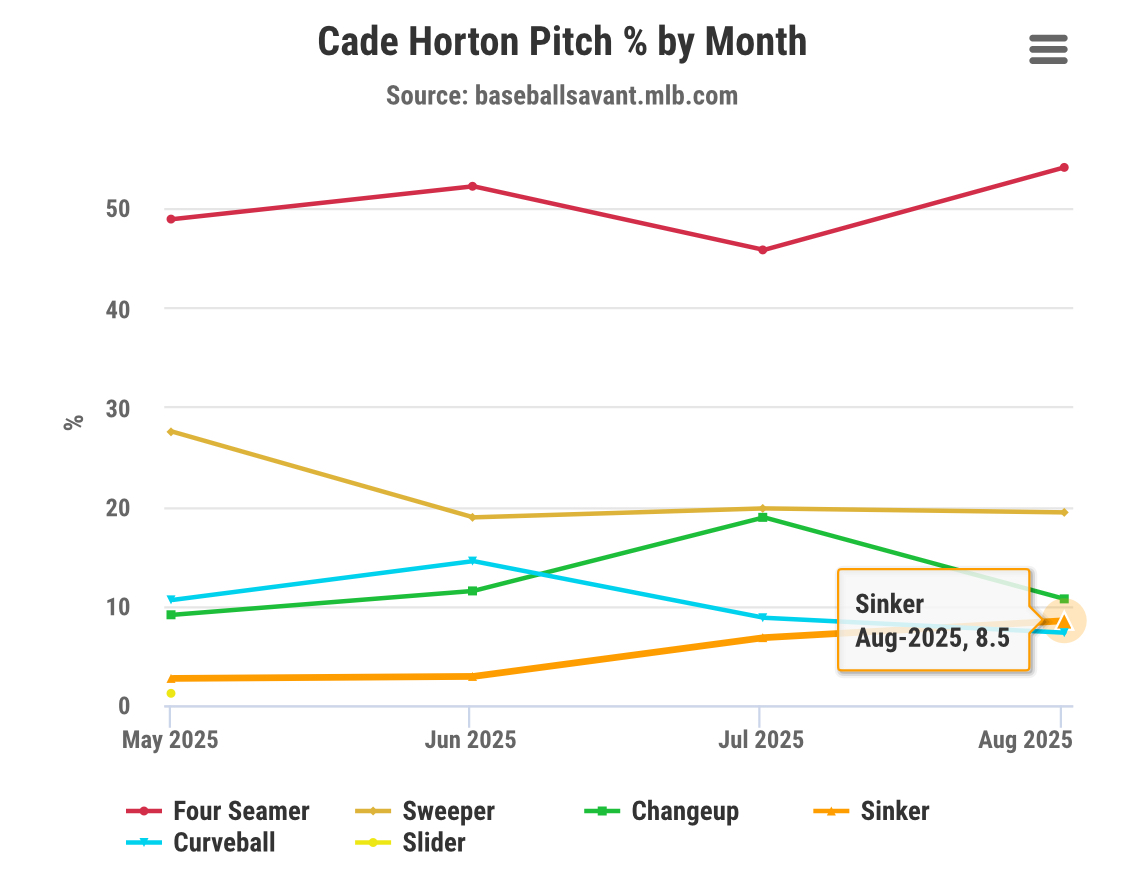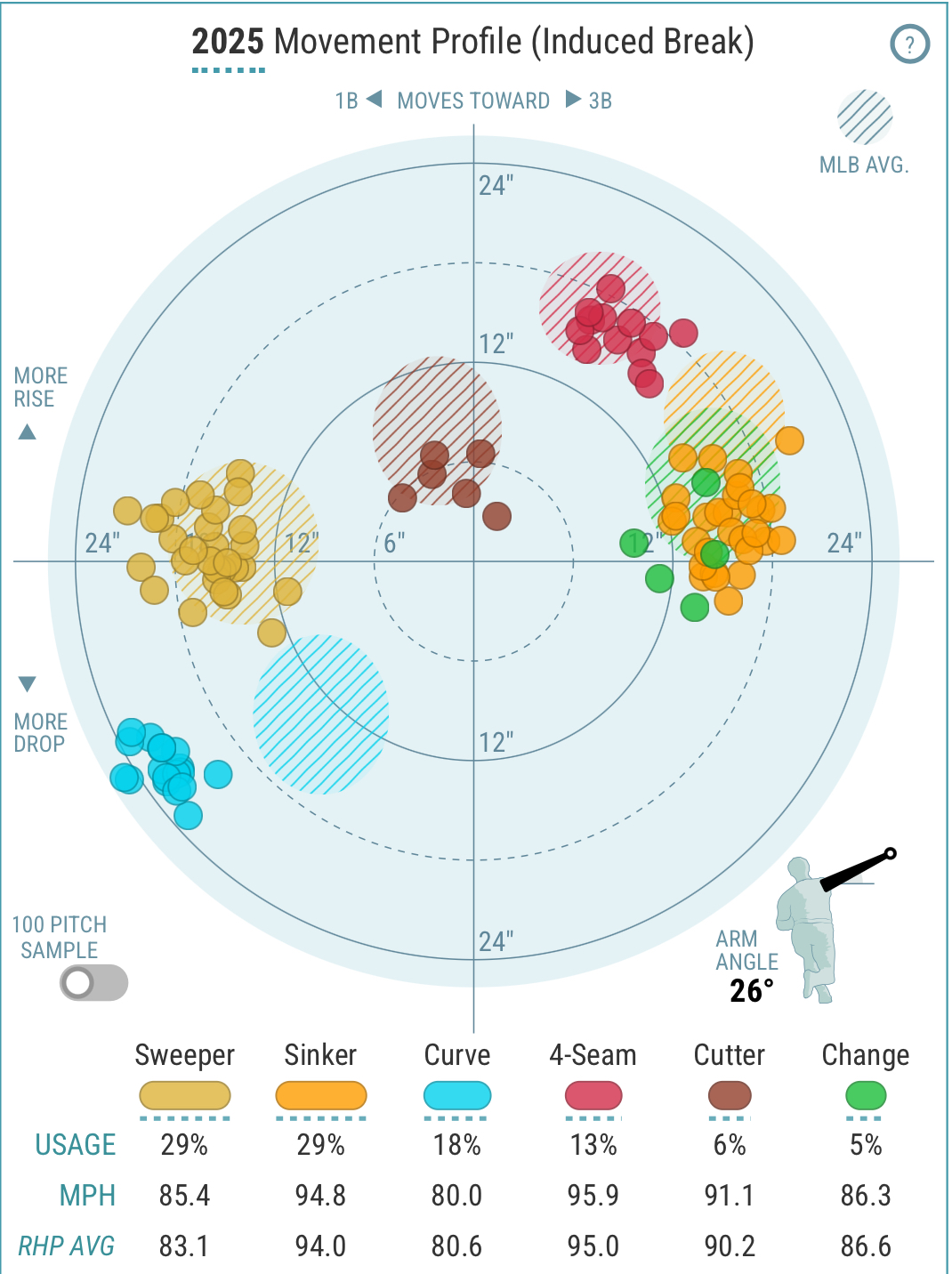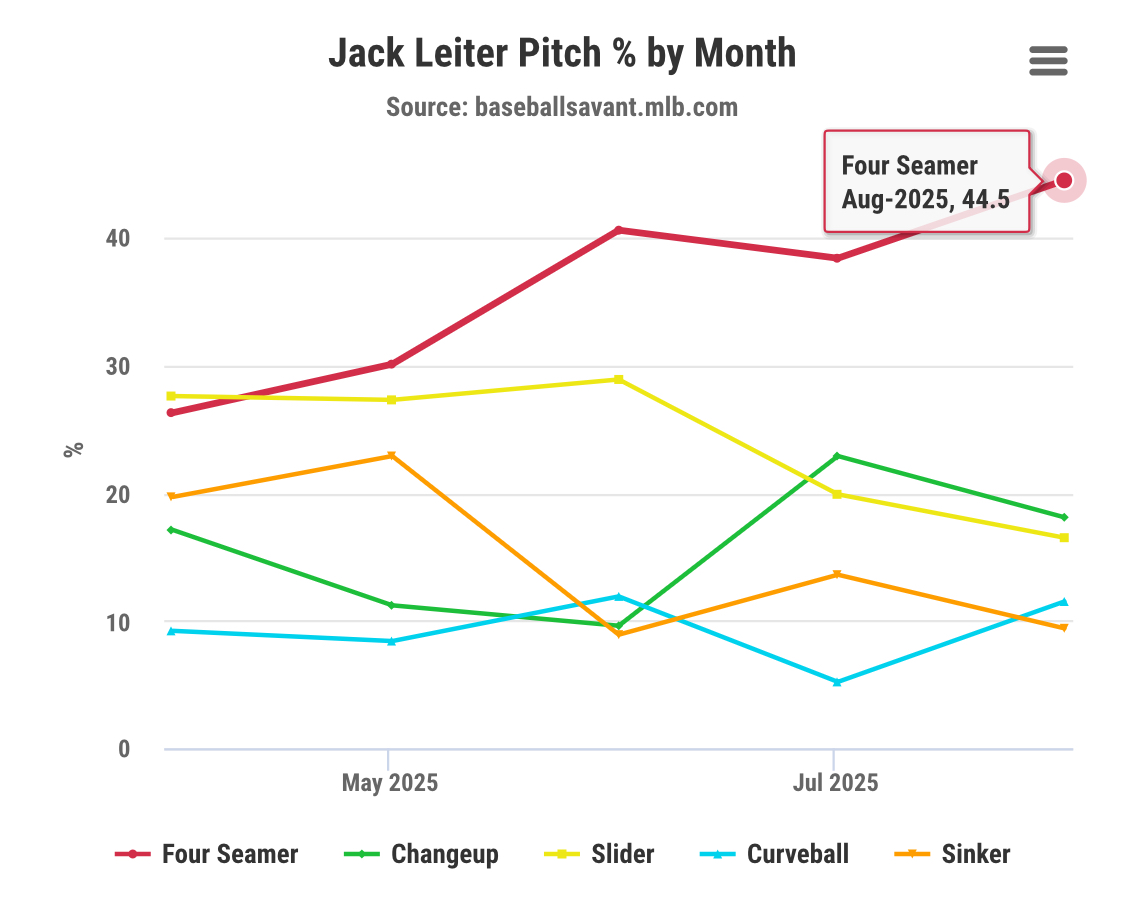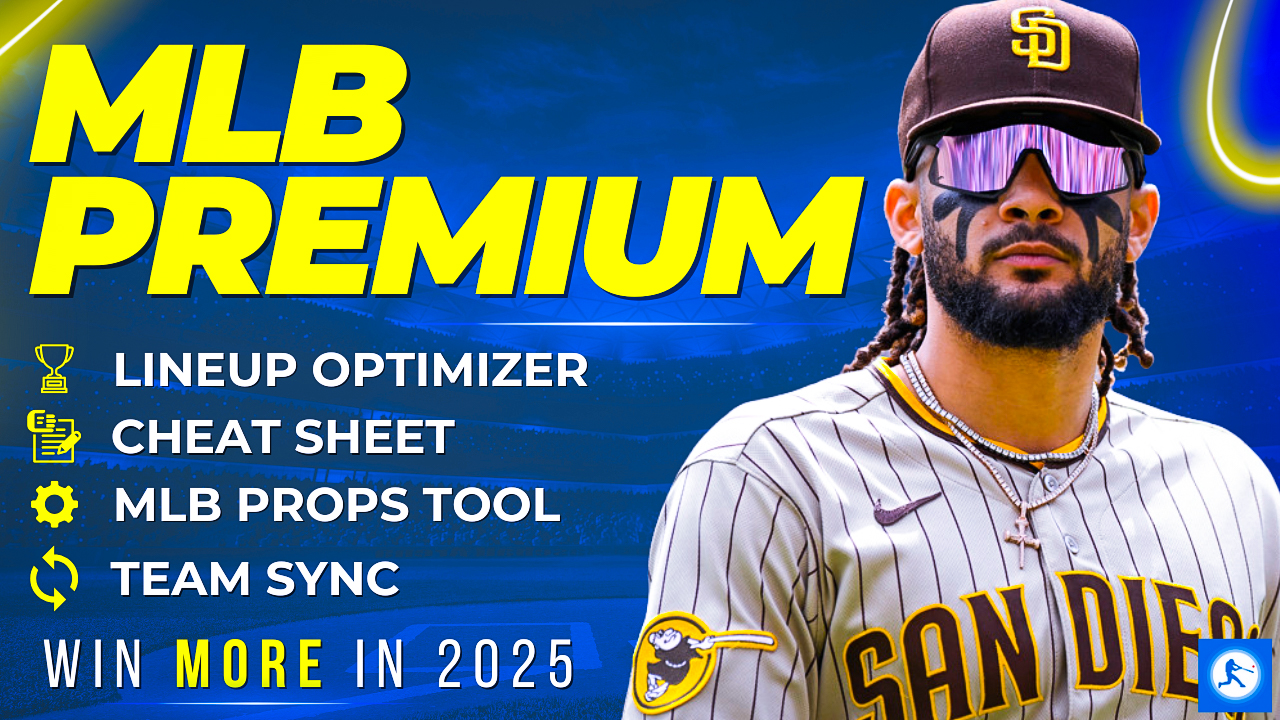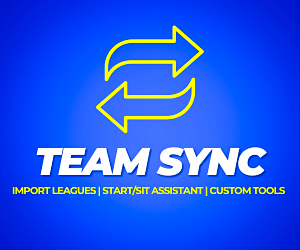Michael Cecchini deep dives into three fantasy baseball starting pitchers to decide if their surprisingly good form merits a roster spot or staying on the waiver wire for Week 22 (2025).
Welcome back to our weekly Unlikely Aces article. Every week of the fantasy baseball season, we analyze a few emerging pitchers to determine whether we buy into their recent performance. Are these pitchers worth rostering in fantasy, or should you leave them on the waiver wire?
This week, we examine whether Cade Horton, Nolan McLean, and Jack Leiter should be added to fantasy teams. All three have pitched well recently, and their roster rates continue going up.
So, let’s train the microscope on Horton, McLean, and Leiter. Should you add any or all of them to your fantasy teams?
Be sure to check all of our fantasy baseball lineup tools and resources:- Fantasy baseball trade analyzer
- BvP matchups data (Batter vs. Pitcher)
- PvB matchups data (Pitcher vs. Batter)
- Who should I start? Fantasy baseball comparisons
- Daily MLB starting lineups
- Fantasy baseball closer depth charts
- Fantasy Baseball live scoreboard
- Fantasy baseball injury reports
Cade Horton, Chicago Cubs
Horton began 2025 as the Cubs’ third-ranked prospect and Top 100 overall (FanGraphs No. 58). He was a hot name entering last season, too, but a shoulder injury limited him to just 34.1 minor league innings in 2024.
Now fully healthy, Horton made quick work of Triple-A this season with a 1.24 ERA, .86 WHIP, and 10.2 K/9. The Cubs called him up on May 10, and Horton proceeded to disappoint. Through his first nine starts, he held a 4.80 ERA, 1.44 WHIP, and 9.5% K-BB%. He looked like a back-end starter and a fantasy afterthought.
Horton has completely turned it around. Over his next nine starts (since July 1), he’s posted a 1.11 ERA (2.89 FIP), .90 WHIP, and 16% K-BB%. He started missing more bats, and opponents have hit just .175 against him during that second sample.
Horton wields a solid five-pitch mix, but as a prospect, he was known for his slider and changeup. Both pitches have been excellent in the majors, with swinging strike rates above 20%. Opponents are hitting .098 against the changeup, and its 50% whiff rate would be among the best in the big leagues.
So, what did Horton do differently to turn his fortunes? He threw his four-seamer more but also ramped up usage of his sinker, especially to righties:
Despite its correlation to his recent success, the sinker itself is allowing a .364 batting average and .545 slugging (the expected numbers are almost as bad). It does carry a 22% whiff rate, which is plus for two-seamers.
It is a bit odd how much Horton’s four-seamer is “getting away with it.” He throws it 50% of the time, and it allows a .287 batting average. However, the slugging against is just .380, although Statcast throws up a red flag with a .510 expected slugging.
There are other signs that Horton is benefiting from good fortune. In his first nine starts, he allowed a league-average 11% HR/FB rate, but since July, it’s a minuscule 4% (can a sinker help that much?). The 1.11 ERA in that time is belied by a 3.92 xFIP (which normalizes home run rate).
Besides his slider, none of Horton’s pitches rate as above average by FanGraphs’ Stuff+ model. Overall, the ERA estimators point to Horton being closer to a 4-ERA talent (3.88 xERA, 4.27 SIERA).
Verdict: Horton has two excellent secondary pitches that work to both sides of the plate. On the other hand, his fastballs are suspect. We know that multiple fastballs can help round out an arsenal, so the sinker addition may make him a viable fantasy starter. We just should not expect a sub-2 or even sub-3 ERA. He should definitely be added in deeper leagues, and he’s worth riding in all league types while he’s hot.
Nolan McLean, New York Mets
Much like Horton, McLean was a good prospect who has actually performed better than expected this season. There are other similarities. Both are righties who sit close to 96 mph on the fastball. McLean was likewise ranked third in his org and top 60 overall, per FanGraphs (53rd to Horton’s 58th).
This season, McLean pitched to a 2.45 ERA, 1.14 WHIP, and 10 K/9 across 113.2 innings at Double-A and Triple-A. The Mets called him up to start on August 16, and over two starts with the big league club, McLean has allowed just six hits in 12.1 innings, leading to a 1.46 ERA and .81 WHIP.
McLean leads with a sinker and sweeper, but also features a four-seamer, cutter, curveball, and changeup. It’s a wide mix and provides weapons to attack both sides of the plate. He can induce grounders with multiple pitches: batted balls against the sinker have a -22° average launch angle. This has led to an absurd 69.2% overall ground-ball rate so far.
McLean can really spin the ball, which makes his curveball a special offering. For context, Seth Lugo’s curve has the best qualified starter spin rate at 3,232 rpm. The best reliever curve boasts 3,240 rpm. McLean’s clocks in at 3,295 rpm.
As a result, his curve moves in unexpected ways. McLean’s gets 5” more drop than batters expect, and its 18.6” horizontal break is among the best in the majors, with 7.5” more break than comparable pitches. So far, it has rendered opponents helpless, with a .111 BAA and 43.8% whiff rate. His Statcast pitch movement plot paints a stark picture of that curve:
McLean is not overly reliant on one pitch, however. He throws five different pitches, generating 20%-plus whiff rates. While he leads with a sinker, McLean’s four-seamer has generated strong swing-and-miss from both sides of the plate (50.5% whiff%). That rate will likely regress a little, but we’ve seen McLean use it effectively up and away to righties and up and in to lefties. Perhaps due to his lower release point, models love both the four-seamer (109 Stuff+) and sinker (103).
The key for McLean will be command and control. He has never had a walk rate below 9% as a professional, and it was over 10% in both Double-A and Triple-A. So far through two big league starts, it’s a more palatable 8.7%.
Although his first start was marred by four walks in 5.1 innings, McLean bounced back with zero across seven innings versus Atlanta. If he stays below 10% walks, he can (and likely will) give back some of his current 32% strikeout rate and still be ahead in terms of skills.
Verdict: McLean has a plethora of good traits to recommend him. He avoids homers, keeps the ball on the ground, and has clear strikeout upside. Of course, the team context is a plus. He has more ways to succeed than Horton. We have to see if he can maintain the improved control, but in the meantime, he should be snapped up in all 12-team or deeper leagues.
Jack Leiter, Texas Rangers
Leiter makes it a clean sweep of players we’re examining who were third-ranked prospects in their orgs entering this season, per FanGraphs. Like Horton and McLean, Leiter made the top 100, but at 84th, he was a bit further down. Control has long been a question with Leiter, and scouts worried he might be destined for the bullpen.
The Rangers have continued developing him as a starter, and early on, the results were spotty. Then, in late June, something clicked. Over his last 10 starts, Leiter holds a 2.86 ERA (3.23 FIP), 1.31 WHIP, and 27% strikeout rate. During this stretch, Leiter minimized his sinker and slider while leaning into his four-seamer and changeup:
This makes sense given the changeup’s results: 32% whiff rate and .292 xwOBA, which are both plus. The walks remained high during the hot stretch at 11.5%, which contributed to the poor WHIP. Improvements in home run results were the primary difference: .89 HR/9 versus 1.24 HR/9 over his first 13 starts.
Prospect Leiter’s fastball garnered an excellent 70 current and future grade on the 20/80 scouting scale. His four-seamer sits 97.3 mph and appears even faster due to his 6’9” extension (89th percentile). It also averages 17.5” of induced vertical break, almost two inches above average. The pitch has generated 10% swinging strikes and a .185 BAA, which are above average and elite, respectively (league average right-handed four-seamers: 9% SwStr and .250 BAA).
Unfortunately, Leiter’s control has continued to bedevil him. In contrast to his fastball grade, scouts gave Leiter a 30 current command grade (with a future grade of 40). That is pretty poor, and despite other improvements, he has walked over 11.5% of batters throughout the season.
Even during his hot 10-start stretch, he walked three or more batters six times. Overall, Leiter holds a 37.8% ball rate, which is very high for a starter and can lead to traffic and shorter outings.
Leiter’s 22% strikeout rate is solid, but the resulting 11% K-BB% is below average. He’s also benefited from a near-78% strand rate (72% is the league average among right-handed starters). So, although Leiter has a 3.81 ERA, these underlying issues help explain his 4.35 FIP and 4.75 xFIP, which point to good fortune to date. Even during his recent strong stretch, Leiter’s 4.46 xFIP says he’s running hot at suppressing home runs.
Leiter allows a lot of hard contact, too, with a 90.8 EV and 11.4% barrel rate. Statcast gives him a 4.62 xERA, almost a full run higher than his actual number. Yet despite a low 35.4% ground-ball rate, Leiter is not allowing many home runs: his 1.03 HR/9 and 9.3% HR/FB% are both beating those metrics’ respective league averages. His home park is really suppressing homers this season (74 park factor), but his home run rates are pretty similar at home vs. on the road.
Verdict: Leiter’s big fastball makes him an intriguing potential growth stock heading into 2026. He also walks too many and allows too much hard contact. For this season, he already should be rostered in deep leagues but could be a worthy sixth or seventh starter in 12-team mixed leagues, especially if your WHIP category is secure. Just be mindful that numerous metrics point to a 4.50 ERA talent, and the home run luck could turn and lead to blowups, especially on the road.
More Fantasy Baseball Advice
Download Our Free News & Alerts Mobile App
Like what you see? Download our updated fantasy baseball app for iPhone and Android with 24x7 player news, injury alerts, sleepers, prospects & more. All free!






 RADIO
RADIO








